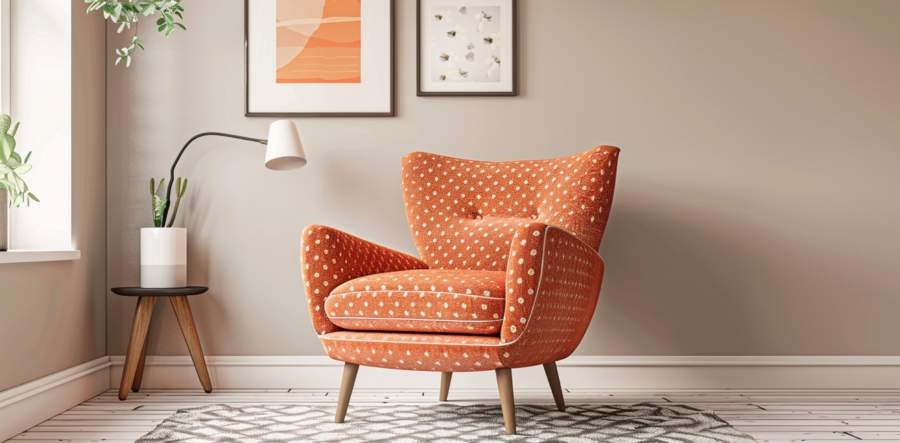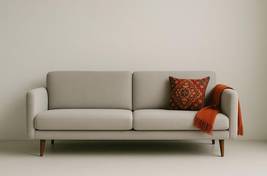Blending Vintage Pieces into a Contemporary Minimalist Home
 There’s a peculiar kind of thrill in rescuing an old, scarred wooden chair from a dusty antique shop and then wondering where on earth to put it in your white-walled, ultra-minimalist living room. It’s a bit like inviting your eccentric great-aunt to stay in a boutique hotel—heartwarming, slightly chaotic, and somehow… it works.
There’s a peculiar kind of thrill in rescuing an old, scarred wooden chair from a dusty antique shop and then wondering where on earth to put it in your white-walled, ultra-minimalist living room. It’s a bit like inviting your eccentric great-aunt to stay in a boutique hotel—heartwarming, slightly chaotic, and somehow… it works.
Minimalism tends to be associated with clean lines, white space, and furniture that looks like it was designed by a sentient spreadsheet. Vintage, on the other hand, is all quirks, color, and character—furniture with scars, stories, and possibly a whiff of mothballs. Combining the two is tricky, but deeply rewarding. When done well, it doesn’t just look good. It feels like home.
Find the Hero, Not the Choir
Your first instinct may be to collect every intriguing old thing you come across. Resist. You are not starting a museum, and this is not a salvage yard reality show.
Choose one or two standout vintage pieces. Look for objects that can hold visual weight—an aged leather armchair with just the right amount of crackle, or a mid-century coffee table that looks like it’s survived both a cocktail party and a minor earthquake. These should be pieces that command attention without screaming for it.
Let them carry their own charm. Don’t crowd them with “supporting” vintage friends unless your aesthetic goal is “indoor flea market.”
Strategic Placement Is Your Best Friend
Where you put your vintage items matters almost as much as what they are. The goal is balance, not a time warp. Place your vintage piece where it can be appreciated—ideally where the eye lands naturally.
A reclaimed industrial stool at the kitchen island? Great. An ornate Victorian mirror leaning against a crisp white hallway wall? Excellent. An antique velvet fainting couch directly across from your IKEA sofa? Brave—but if the colors don’t clash, it just might work.
It’s about creating visual punctuation marks, not full sentences in cursive. Let minimalism’s whitespace be the canvas and vintage the unexpected brushstroke.
Texture Keeps It Tactile
Minimalist spaces often look good in photos but feel like you’re about to get scolded for breathing near them. Vintage pieces can fix that.
Rough wood, worn leather, nubby fabric—these are textures that whisper *lived-in* and *touch me*, but in an entirely non-creepy way. If your home is a field of sleek surfaces and cold finishes, a single piece with visual and tactile warmth can shift the whole mood.
That said, don’t throw in Grandma’s crocheted throw just because it’s old and soft. Choose textures that contrast gently with your existing surfaces. Vintage doesn’t need to fight modernism; it just needs to nudge it a bit.
Color: Your Hidden Negotiator
Color is where many minimalists fear things will go wrong. And rightly so—one rogue mustard-yellow cabinet and suddenly you’re living in a Wes Anderson set.
The trick is to treat color like seasoning: enough to make the dish interesting, not so much you have to pretend you like it. If your home is mostly monochrome, a pop of deep green from a reclaimed chair, or the amber hue of aged wood, adds life without chaos.
Aim for a muted palette when possible. Natural wood, faded metals, washed textiles—these blend far more seamlessly into a contemporary setting than loud vintage signage or 70s floral wallpaper.
Color should guide the eye, not hijack it. If your vintage piece has too much color, consider neutralizing it with nearby items: a pale rug beneath, soft lighting above, or even spacing that lets it breathe.
Styling Without Sentimentality
Vintage often arrives with emotional baggage. Maybe it belonged to your grandmother. Maybe it just *feels* like it should have. While stories are lovely, they should never dictate design. Sentimentality is not a substitute for visual logic.
Ask yourself: does this piece *actually* work in the space, or do I just feel bad giving it the boot? Styling with vintage means looking past the romance and making hard aesthetic choices. Sometimes that 1920s lamp with the wobbly shade belongs in storage, not your living room.
Use restraint. Give each piece room to breathe. Let that old wooden trunk speak for itself without covering it in ironic coffee table books or artisanal candles that cost more than your weekly grocery budget.
Let Flow Be the Filter
Every room has a rhythm—even if it’s subtle. Introducing a vintage element shouldn’t cause a record scratch. The goal is cohesion, not collision.
You’re blending, not interrupting. Step back and look at how your vintage piece interacts with the space around it. Does it create a natural visual path? Or does it feel like an extra in the wrong movie?
This is where you have to channel your inner furniture whisperer. Sometimes a piece wants to live near natural light. Sometimes it wants a modern counterpart to contrast with. And sometimes, sadly, it wants to be returned to the garage until it learns to behave.
Lighting Is a Secret Weapon
Harsh lighting can make even the most beautiful antique look like it’s auditioning for a ghost tour. On the flip side, soft, deliberate lighting can elevate a vintage piece into art.
Use warm bulbs. Spotlights. Hidden LEDs if you’re feeling bold. Place vintage items where natural light plays gently across surfaces, showing off patina and detail without turning the piece into a sunbaked relic.
And avoid placing vintage fabric too close to windows unless you enjoy watching it slowly bleach into oblivion. Learn from the museum folks—preserve, don’t scorch.
Old Meets New, and They Get Along Just Fine
In the end, minimalism and vintage aren’t enemies. They’re just two aesthetics trying to figure out if they can share an apartment without arguing over shelf space.
A contemporary minimalist space is like a blank sheet of paper. Vintage adds the punctuation, the emphasis, the irony. It adds age and weight where minimalism leans toward youth and airiness.
You don’t need a house full of vintage pieces. One or two, placed with care and intention, can transform your space from model-home sterile to quietly expressive. It’s less about design dogma and more about personality—yours, specifically.
Antiques Roadshow, But Make It Cool
There’s no formula here, and that’s part of the fun. Yes, blend with intent. Yes, keep it edited. But above all, enjoy the small shock of contradiction that happens when old meets new and neither backs down.
If a reclaimed 1940s drafting stool wants to hang out under your floating glass desk, let it. If a steel locker from a defunct factory suddenly works as your linen cabinet, congratulations—you’ve just done what every minimalist secretly wants: made space for a little rebellion.
|
|





 There’s a peculiar kind of thrill in rescuing an old, scarred wooden chair from a dusty antique shop and then wondering where on earth to put it in your white-walled, ultra-minimalist living room. It’s a bit like inviting your eccentric great-aunt to stay in a boutique hotel—heartwarming, slightly chaotic, and somehow… it works.
There’s a peculiar kind of thrill in rescuing an old, scarred wooden chair from a dusty antique shop and then wondering where on earth to put it in your white-walled, ultra-minimalist living room. It’s a bit like inviting your eccentric great-aunt to stay in a boutique hotel—heartwarming, slightly chaotic, and somehow… it works.